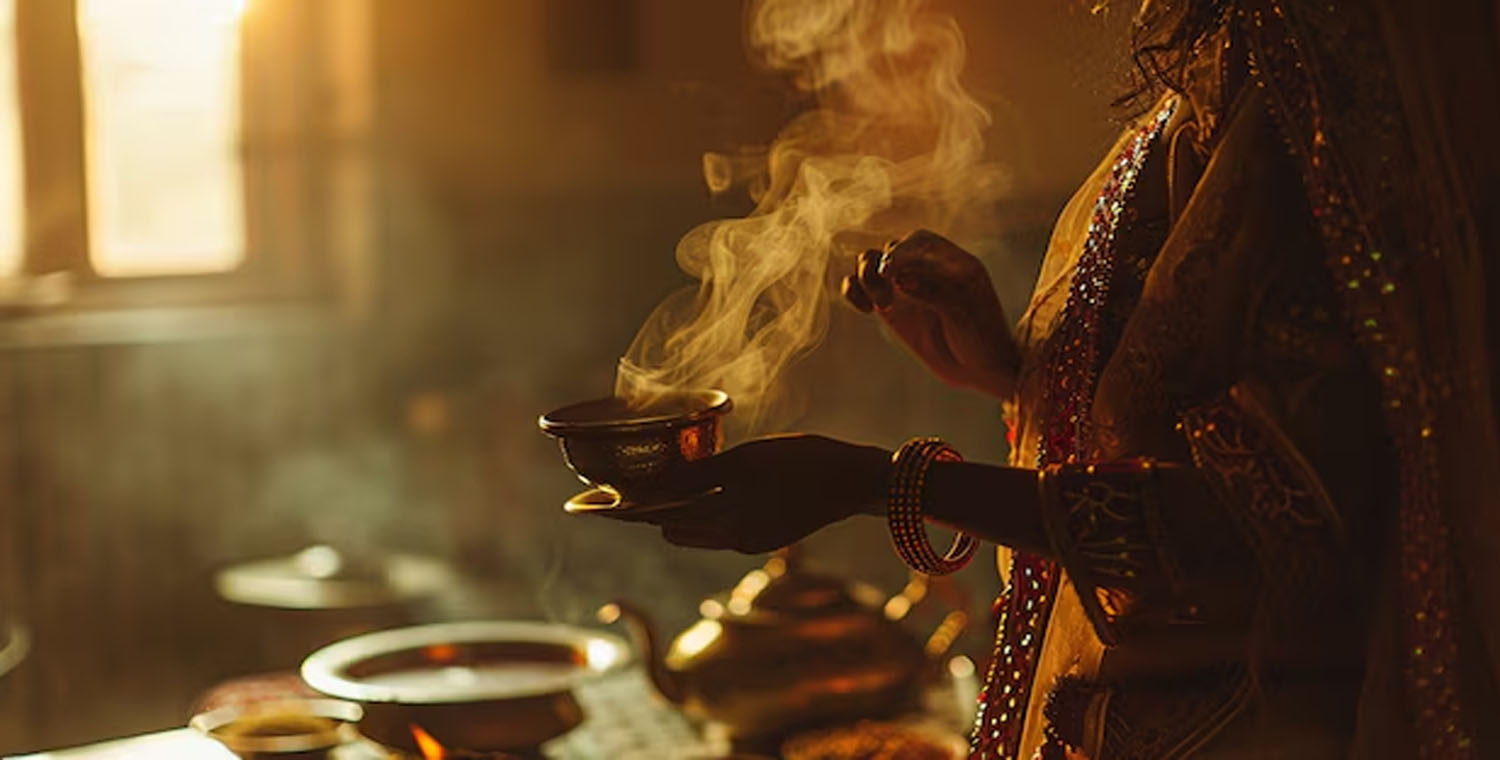Lord Ganesha, the beloved elephant-headed deity, is revered across India and in various cultures around the world. Known as the remover of obstacles and the god of beginnings, Ganesha holds a special place in Hindu worship. One of the integral aspects of Ganesha worship is the Aarti, a devotional song sung in praise of the deity. This article will explore the significance of Ganesh Aarti, its lyrics, and their spiritual meaning, as well as the broader context of worshiping Lord Ganesha.
Understanding Aarti in Hindu Worship
Aarti is a Hindu religious ritual of worship, in which light from wicks soaked in ghee or camphor is offered to one or more deities. The practice symbolizes the removal of darkness and ignorance, and the light signifies the presence of the divine. Aarti is typically performed at the end of a prayer session, accompanied by devotional songs.
The Role of Aarti in Devotion
Aarti serves as a way for devotees to express their love, gratitude, and reverence towards the deity. It is a moment of connection, where the devotee seeks blessings and guidance. Singing the Aarti is believed to purify the surroundings and create a spiritual atmosphere, enhancing the worship experience.
The Importance of Ganesh Aarti
1. Celebration of Ganesha’s Attributes
Ganesh Aarti is specifically composed to celebrate the unique attributes of Lord Ganesha. The lyrics often highlight his wisdom, strength, and compassion, reminding devotees of his role as a protector and guide. By singing the Aarti, devotees invoke these qualities into their own lives.
2. Community and Collective Worship
Performing Ganesh Aarti is often a communal activity. During festivals, especially Ganesh Chaturthi, devotees gather to sing the Aarti together. This collective worship fosters a sense of community and shared devotion, strengthening bonds among participants.
3. Spiritual Upliftment
The melodic and rhythmic nature of Aarti has a profound impact on the emotions of the devotees. Singing Ganesh Aarti can evoke feelings of joy, peace, and devotion, enhancing spiritual upliftment. It serves as a reminder of the divine presence in everyday life.
Lyrics of Ganesh Aarti
The lyrics of Ganesh Aarti vary across different regions and traditions. However, one of the most popular and widely recognized Aartis is “Om Jai Ganesh Deva.” Below are the lyrics along with their meanings.
Om Jai Ganesh Deva
Om Jai Ganesh Deva
Mangal Murti Morya
Ganapati Bappa Morya
Translation: This opening line praises Lord Ganesha as the auspicious deity, seeking his blessings.
Dukh Hartey Sukh Karta
Dukh Hartey Sukh Karta
Naveen Bhav Tujhe Namah
Translation: This line acknowledges Ganesha as the remover of sorrows and the provider of happiness, expressing reverence.
Jai Jai Ganesha Jai Jai Ganesha
Jai Jai Ganesha Jai Jai Ganesha
Brahma Vishnu Maheshwara
Translation: This section praises Ganesha as being equal to the three supreme gods—Brahma, Vishnu, and Shiva.
Tujhse Gati Aarti
Tujhse Gati Aarti
Aarti Karta Shubha Shubh
Translation: Here, devotees express their intent to perform Aarti, seeking auspiciousness and blessings.
Gananayak Aarti
Gananayak Aarti
Sukhkarta Dukh Harta
Translation: This acknowledges Ganesha as the leader of the Ganas (divine attendants), who brings happiness and removes suffering.
Spiritual Significance of Ganesh Aarti Lyrics
1. Symbolism of the Lyrics
The lyrics of Ganesh Aarti are rich in symbolism. Each line conveys a specific attribute of Lord Ganesha, emphasizing his qualities as a benevolent and compassionate deity. By reciting these lines, devotees are reminded of the importance of embodying these qualities in their own lives.
2. Affirmation of Faith
Singing Ganesh Aarti serves as an affirmation of faith. It strengthens the devotee’s belief in Ganesha’s ability to remove obstacles and provide guidance. This affirmation is particularly significant during times of difficulty or uncertainty.
3. Connection to Tradition
The Aarti connects devotees to centuries of tradition and culture. By participating in this ritual, individuals become part of a larger community of believers who have honored Ganesha in similar ways throughout history.
The Practice of Performing Ganesh Aarti
1. Timing and Setting
Ganesh Aarti is typically performed during prayer sessions, especially in the morning or evening. Devotees often gather around a beautifully adorned idol or image of Lord Ganesha, creating a sacred space for worship.
2. Preparation for Aarti
Before performing the Aarti, devotees usually prepare offerings, which may include flowers, sweets, fruits, and incense. The preparation signifies the effort and love put into the worship, enhancing the spiritual experience.
3. The Ritual of Aarti
During the Aarti, a lighted lamp or plate is rotated in front of the deity while the Aarti is sung. The act of circling the lamp symbolizes the illumination of darkness and ignorance, inviting divine blessings into the lives of the devotees.
4. Concluding the Ritual
After the Aarti, devotees often offer prayers, express gratitude, and may partake in prasad (blessed food) as a symbol of the deity’s blessings. This concluding ritual reinforces the spiritual connection and community feeling.
Cultural Impact of Ganesh Aarti
1. Festivals and Celebrations
Ganesh Aarti plays a central role in the celebration of festivals, especially Ganesh Chaturthi. During these festivities, communities come together to sing Aartis, creating a vibrant atmosphere of joy and devotion.
2. Art and Music
The melodic tunes of Ganesh Aarti have inspired countless artists and musicians. From traditional folk renditions to modern adaptations, the Aarti has permeated various forms of artistic expression, enhancing its reach and impact.
3. Global Recognition
With the Indian diaspora spreading across the globe, Ganesh Aarti has gained international recognition. Celebrations of Ganesh Chaturthi in countries like the United States, Canada, and the UK often feature communal Aarti, promoting cultural exchange and understanding.
Challenges and Misunderstandings
1. Misinterpretation of Lyrics
Due to language barriers, some may misinterpret the lyrics of Ganesh Aarti. It’s essential to provide translations and explanations to ensure that the spiritual significance is conveyed effectively.
2. Cultural Sensitivity
As Ganesh Aarti becomes more recognized globally, it is important to approach the practice with cultural sensitivity. Understanding the context and significance of the Aarti helps in fostering respect and appreciation for its roots.
Conclusion
Ganesh Aarti is not just a ritual; it is a profound expression of devotion that embodies the qualities of Lord Ganesha. Through the lyrical praise of the deity, devotees seek blessings, guidance, and spiritual upliftment. The significance of Ganesh Aarti extends beyond individual worship, fostering community bonds and cultural identity.
As we continue to honor Lord Ganesha through Aarti, it is vital to appreciate its deeper meanings and traditions. Whether in grand festivals or intimate family prayers, the songs sung in praise of Ganesha serve as a reminder of the divine presence in our lives. By embracing the spirit of Ganesh Aarti, we can cultivate an atmosphere of love, gratitude, and devotion, enriching our spiritual journeys.















Leave a Reply